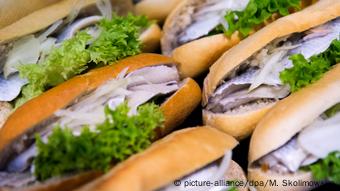
The COVID-19 pandemic has created an extraordinary appetite among Germans for fish and other seafood. In the first year of lockdowns and quarantines, German residents, forced to give up periodic trips to restaurants and cook at home, bought 505,000 tonnes of seafood in supermarkets and stores and spent €5.3 billion on it. And last year they disbursed up to 5.4 billion euros, although in quantitative terms they bought a little less – 495 thousand tons. This year, demand is in decline, more precisely, it is normalizing, stabilizing at a high level, while meat production and consumption in Germany continues to fall.
Fish boom during two years of coronavirus
“The huge increase in two extraordinary coronavirus years, 2020 and 2021, cannot be repeated in quantitative or monetary terms,” said René Stahlhofen on Aug. Center (Fisch-Informationszentrum, FIZ). It is a marketing and lobbying organization for the German fishing industry and is based in Germany’s largest port.
During the pandemic, Germans actively bought and cooked fish dishes at home
Despite the fact that in the first half of the year sales have decreased by more than 14%, and revenues have decreased by 412 million euros in relation to the same period of the previous year, the representative of the sector is quite satisfied. Rene Stahlhofen compares the results with the data of the first six months of the pre-pandemic 2019: in quantitative terms, the drop is minimal and, in monetary terms, up to a good increase of 4.6% or 110 million euros. This was mainly due to a general increase in prices and an increase in demand for fresh (always more expensive) fish.
Germans often buy canned fish and frozen fish
However, most often Germans bought and bought canned or canned seafood, as well as frozen. This suggests that the rapid growth in sales over the past two years has been driven not by wealthy foodies but by the general population.

The most popular canned tuna in Germany
Canned fish accounted for about 28% of fish consumption per capita last year, with almost exclusively tuna and herring (and a small part of sardines) and frozen fish 24%. The share of fresh, frozen and cooked crustaceans and molluscs increased to 15%, in fresh fish the share was 12%, in smoked fish – 10%.
From the statistics published by the FIZ it is also concluded that about 57% of the German fish market is concentrated in the sea, more than 28% in freshwater fish and more than 14% in crustaceans and molluscs.
Top 10 most popular fish in Germany: three clear leaders

Fresh buns with young herring are a popular delicacy on the North Sea and Baltic coasts.
The most popular fish in Germany was and remains salmon (Lachs), pollock took second place last year (it is sold in Germany under the trade name Alaska-Seelachs), ahead of tuna (Thunfisch). Fourth and fifth places, but already with a notable margin, were taken by herring (Hering) and shrimp (Garnelen). The most popular freshwater fish – trout (Forelle) – comes in sixth. The top 10 also includes squid and octopus (Tintenfische), mussels and oysters (Muscheln), mackerel (Makrele) and cod (Kabeljau).
A high-level normalization of fish consumption is taking place in Germany amid a steady decline in demand for meat. Its production, Germany’s Federal Statistical Office (Destatis) reported on August 5, decreased in the 1st half of 2022 by 7.9% compared to the same period in 2021, while with stable indicators for birds, the drop in pork was more than 10%, and for beef – more than 9%. Thus, a long-term trend was maintained, largely associated with the desire of the Germans for a healthier and more balanced diet.
Source: DW
James Springer is a renowned author and opinion writer, known for his bold and thought-provoking articles on a wide range of topics. He currently works as a writer at 247 news reel, where he uses his unique voice and sharp wit to offer fresh perspectives on current events. His articles are widely read and shared and has earned him a reputation as a talented and insightful writer.